Garmin has released the GPSMAP 66i, this is the latest iteration for the GPSMAP series and now includes 2-Way Satellite Communication while still retaining the GPSMAP functionality from the 66 series. The GPSMAP 66i is available in Australia now at a RRP of $899 AUD.
GPSMAP 66i comes with the following:
The Quick Review: GPSMAP 66i vs inReach Explorer+ (Differences Only)
The inReach Explorer is 2-Way satellite messenger capable of sending and receiving texts to any number or email in the world. The GPSMAP 66i shares this functionality but in addition has a stronger focus on mapping features as shown below.
| GPSMAP 66i | inReach Explorer+ | |
| Memory Capacity | 16 GB | 2 GB |
| Ability to add Custom Maps | Yes | No |
| Battery Life | Up to 35 hours at 10-minute tracking
Up to 200 hours at 30-minute tracking (power saver mode) |
Up to 100 hours at 10-minute tracking
Up to75 hours at 10-minute tracking with 1-second logging Up to 30 days at 30-minute interval power save mode |
| Interface | USB and NMEA 0183 compatible | USB |
| Preloaded Maps | Garmin Topo Active Mapping | DeLorme (Open Street Maps) |
| Micro SD card | Yes (not included) | No |
| Area Calculation | Yes | No |
| Auto Routing (turn-by-turn) | Yes | No |
| Geocaching | Yes | No |
| Garmin Connect | Yes | No |
| Birds Eye Satellite Imagery | Yes | No |
| RINEX Logging | Yes | No |
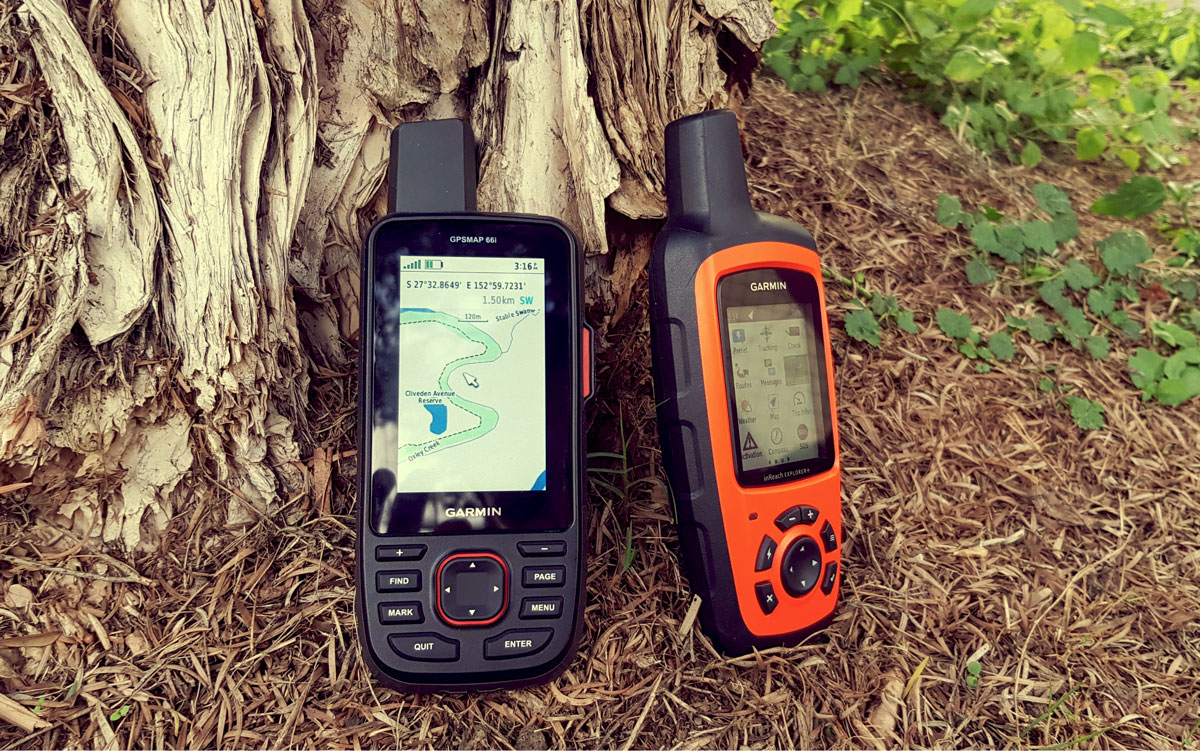
Above are the core differences between the models, obviously, this isn’t a full feature list as both these units share a lot in common and I’ll be dissecting their features in depth later on.
The inReach Explorer+ has more of a focus on battery life performance and less on mapping functionality. This is primarily due to the inReach being mostly developed by DeLorme before Garmin acquired them. The GPSMAP 66i is closest to a fully Garmin Satellite Communicator as it’s almost entirely a standard GPSMAP 66 with Satellite communication technology built-in.
The benefits and features of each device make it pretty clear which item is best. The GPSMAP 66i is your, do everything device when you’re off the grid. You can use this device with custom maps, a much more robust waypoint, route and log system along with more detailed topo maps. You also have access to auto-routing function for turn-by-turn navigation and satellite imagery for highly accurate mapping information. On the other hand, if you prioritise battery life, then the inReach Explorer+ is the best option as it’s designed to last much longer then the GPSMAP 66i. You lose mapping and other special features for this battery life though.
There’s no difference in terms of satellite communication functionality. Both devices use the Iridium network, have the same high-sensitivity receiver and same subscription costs.
What does it do?
The GPSMAP 66i is designed with the whole kit and caboodle. I’ll break it’s features and functionality down across the following sections. Design/Hardware, Mapping, Satellite Functionality, Outdoor Features and Sensors, Smart Features and Accessories.
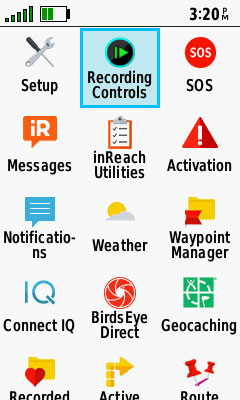
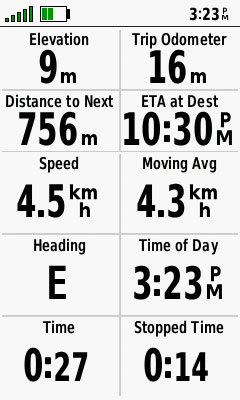
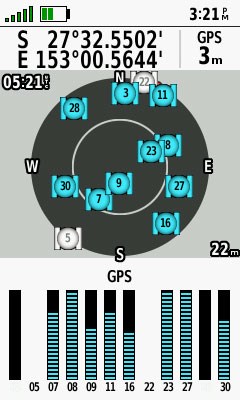
Design and Hardware
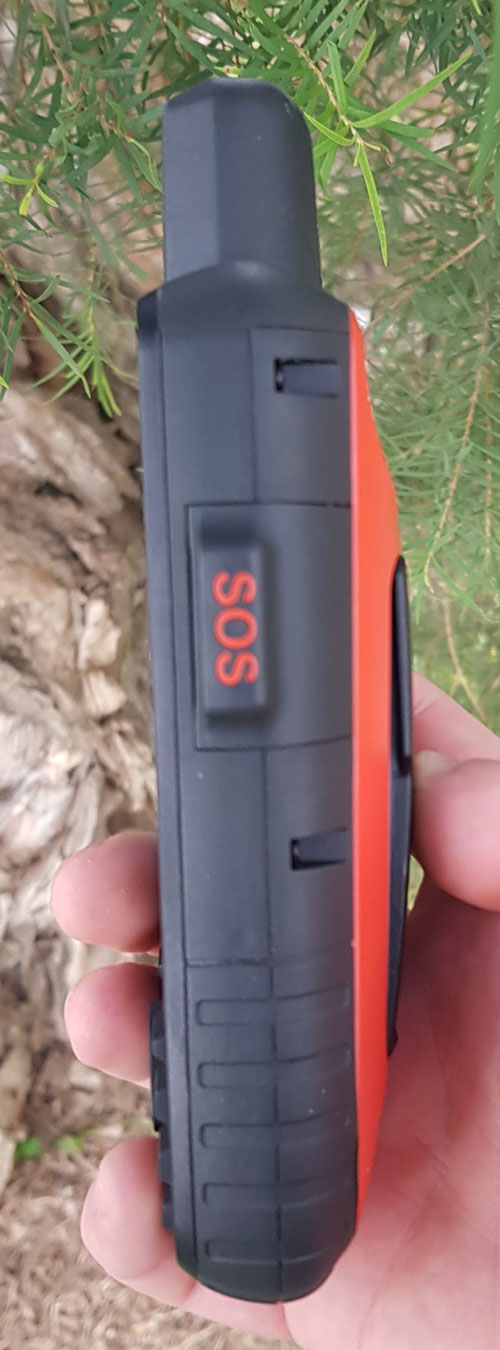
The GPSMAP 66i has a larger display screen then the inReach Explorer+ and comes with more button options. It feels a little snappier than the inReach Explorer+ in terms of how fast you can move around the menu page and open different apps. Other than that the design is similar the button do much of the same things with the GPSMAP having dedicated find and mark and page buttons while the inReach Explorer+ has the lightning button for a designated shortcut function.
They also have the SOS Plastic button covers hiding the real button underneath to prevent and accidental SOS.
The GPSMAP 66i like the 66 models it comes with MIL-STD 810G certificate, this is basically a U.S. military standard for how robust and survivable the device is. There’s an 804 page document out there that explains in excruciating detail what this means but, in short, the device must pass a series of tests including drop resistance, vibration resistance, wind/rain resistance, sand/dust resistance, crash/shock resistance, fluid contamination resistance, extreme temperature resistance, salt fog resistance, humidity resistance, high altitude for pressure resistance. So yes, this certificate is a speedy and easy way to determine that yes, this device is reasonably tough.
Mapping Features
The GPSMAP 66i comes preloaded with routable Garmin Topo Active maps and access to BirdsEye satellite imagery (no subscription required). The Topo Active maps come with 2 free updates per year. These map updates are done via Garmin Express.
The GPSMAP 66i also has the option to add custom maps or maps via the SD card slot (this could also be used to increase the memory space of the device). The additional maps you can put on the device include Topo V6, Topo Lite, Hema map card or Hema Maps/Garmin maps. As this is technically part of the GPSMAP range, you can also add marine charts to the device. The full list of maps are available on this page under the ‘accessories’ tab. This also means you can use it with your standard Garmin software, Basecamp. Which will be a relief for a lot of users who are familiar with basecamp and have many of their tracks, routes and waypoints stored there.
You can also use the standard mapping features for GPSMAP devices including waypoints/favourites/locations (10,000 different points), 250 saved routes and 20,000 points on the track log, 250 saved GPS tracks, and 300 saved fit activities.
The GPSMAP 66 series also introduced the RINEX logging function. RINEX (Receiver Independent Exchange Format) allows recording of raw GPS data like distance to satellites, line of sight speed between the receiver and satellite signal strength. This raw GPS data can be used with third party programs to create more accurate locations, sometimes as precise as 10cm.
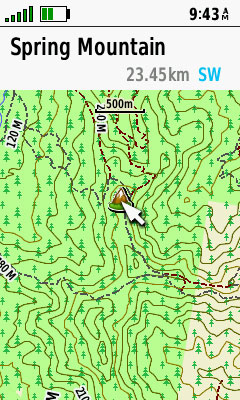
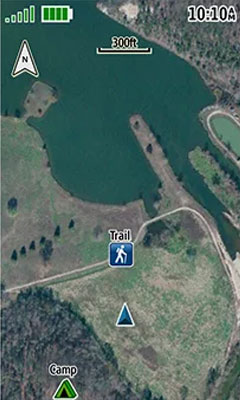

Satellite Functionality
The GPSMAP 66i uses the Iridium satellite network to send and receive text messages all across the globe and in an emergency trigger an interactive SOS with 24/7 search and rescue monitoring. This satellite function though does require an active satellite subscription. This device can message other inReach users, mobile numbers and email addresses.
*GPSMAP 66i GPS mapping features can function without an active subscription but you cannot: send/receive texts, share your current position live, request live weather updates
You can also share you position live in different tracking intervals (depending on your current power mode) this allows your friends/family or people you have given access to the MapShare function the ability to check your position via the MapShare tracking page on the InReach web portal.
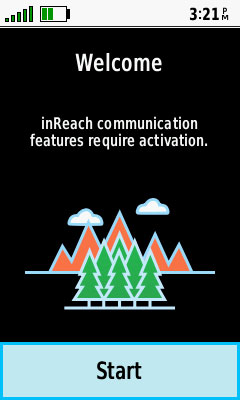
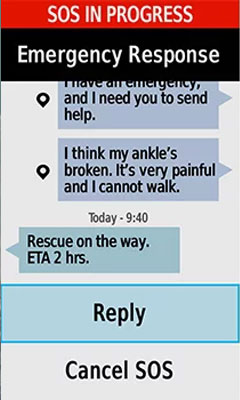
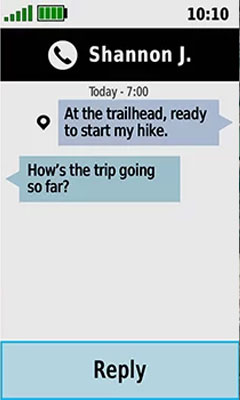
What are the subscription costs involved?
The table below outlines the subscription costs for the GPSMAP 66i Satellite subscription plan as of 2/07/19
| Safety | Recreation | Expedition | Extreme | Additional Fees | |
| SOS | Unlimited | Unlimited | Unlimited | Unlimited | |
| Text Messages | 10 | 40 | Unlimited | Unlimited | |
| Preset Messages | Unlimited | Unlimited | Unlimited | Unlimited | |
| Tracking Intervals | 10 Minutes+ | 10 Minutes+ | 10 Minutes+ | 2 Minutes+ | |
| Tracking Points | $0.15 | Unlimited | Unlimited | Unlimited | |
| Location Pings | $0.15 | Unlimited | Unlimited | Unlimited | |
| MONTHLY CHARGES | Activation Fee: $33.00 | ||||
| Annual/Contract | $20.00 | $40.00 | $75.00 | $119.00 | Move Down A Plan Fee: $37.00 |
| Freedom Plan | $25.00 | $55.00 | $99.00 | $149.00 | Annual Freedom Fee: $37.00 |
| OVERAGE CHARGES | |||||
| Messages (each) | $0.75 | $0.75 | N/A | N/A | |
There’s a lot of different prices and options on this so I’ll break it down.
Prices/Fees shared by both plan types (Annual and Freedom)
- Activation fee $33
Annual/Contract Plan
- This plan has cheaper monthly rates but you have a 12-month contract.
- Moving down a plan tier on the Annual/Contract plan will incur a $37 fee
Freedom Plan
- This plan is more expensive on a monthly basis but can be suspended/re-activated at any time. When you activate the device, you have 30 days of use before it will automatically charge you again at the plan tier you chose. Suspend the device before this happens if you don’t want more than 30 days.
- This Plan has a $37 Annual Freedom Fee that is charged once per year
Plan Tiers
The features of each plan tier are the same regardless of whether you’re on a contract plan or a freedom plan, the only difference is the price you pay (more expensive from freedom plan users).
What happens when you trigger an SOS?
When you open the flap on the side of the unit and press the button, the device will begin to trigger the SOS. The SOS button will automatically cancel in 5 seconds unless you explicitly acknowledge and proceed with the prompts on the screen. From there you will be put in contact with GEOS who will begin arranging your rescue and asking you details about your emergency.
Regarding triggering an SOS and this should be common knowledge but I’ll write it anyway. You should only use SOS in a SERIOUS emergency. Sore ankle and tummy ache won’t cut it, these guys risk their lives to rescue people and won’t appreciate you putting them in danger and anyone else that might have been a higher priority. That said if you are in grave danger it’s good to know that help won’t be far away.
Outdoor Features and Sensors
The GPSMAP 66i offers area calculation, geocaching (paperless) and custom maps compatibility. It also has access to the standard GPSMAP features including the Hunt/Fish calendar, Sun and Moon information and the picture viewer function.
The GPSMAP 66i also comes with a barometric altimeter and a compass sensor (tilt compensated 3 axis).
Smart Features
New to a device with inReach functionality is Garmin Connect compatibility. This allows you to add apps and special data fields made by Garmin’s community members.
The GPSMAP 66i also allows you to use the Garmin Explore app on your mobile phone. This app is a great companion the 66i in that it helps you type messages on a familiar keyboard format, helps you conserve power and shows your map position without having to open the handheld.
Accessories
The GPSMAP 66i has a lot of compatible accessories. It has Garmin spline mount design which means it can be used with many of Garmin accessories already like RAM's spine mount for use with all RAM mounting products and Garmin's bike mount, backpack tether, belt clip, marine mount, lanyards and more. This doesn’t even go into its compatibility with the compatible fitness sensors, Geocaching beacon, HRM. To view the full list check out the ‘accessories’ tab on this page.
Summary
Overall the GPSMAP 66i shows itself to be a solid investment for your pack. The additional versatility of having the extra mapping functions like custom maps, more room for waypoints and special mapping cards like marine maps or specialised maps like Hema Maps show that GPSMAP 66i is a solid 2-way Satellite messenger all-rounder. That’s not to say you need all these features, if you just want a 2-way satellite messenger to keep your friends/family updated on your position and have the SOS option should you ever need it then a perfectly suitable option would be an inReach Mini. The inReach Explorer+ is also an option but if you were deciding between a GPSMAP 66i or an inReach Explorer+ and the battery life wasn’t a factor then I would go for a GPSMAP 66i.



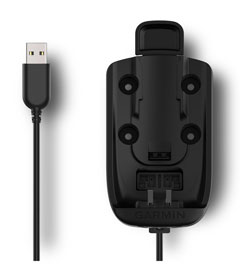
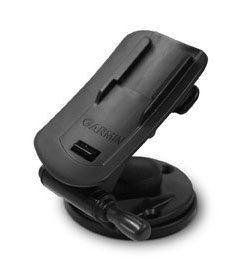
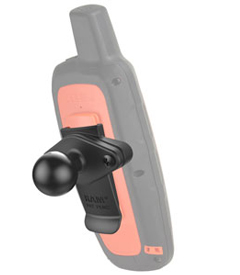


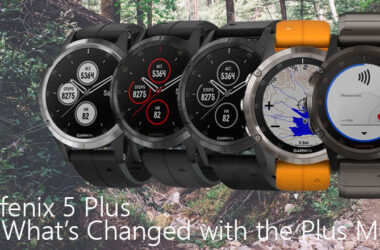
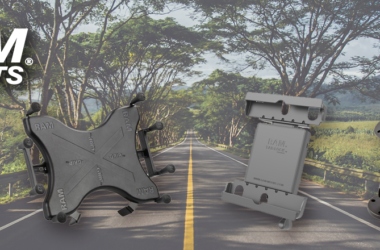
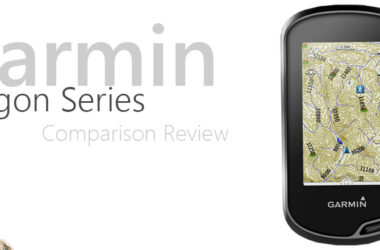
I just bought a GPSMAP 66i from Garmin and I am really disappointed. As a safety tool it should never hang up, just like a lifejacket or a seat belt. Nevertheless, it does hang up. Imagine that happening when you are really in in distress.
On top of that, it says that maximum message length is 160 characters. This was true for Garmin inReach+ previously. However, Garmin now defines message as not only the actual message but also the list of recipients. Long emails means that you have less characters. This is somewhat greedy to say the least. In practice, since this is a new thing, different recipients “cost” differently. My brother as a recipient sets me back just one character whereas my son sets me back 14 characters. It does not make sense.
It would be great if you bring up these things so that Garmin is feels inclined to improve 🙂